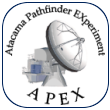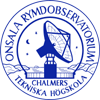ARTEMIS observing time calculator, Ver 2.0
You can either calculate the RMS per beam for a given integration time, or calculate the integration time needed to reach a certain RMS/beam. This OTC is preliminary, the time estimates are only indicative pending the commissioning of the full instrument.
At this stage, ArTeMiS should not be used for sources smaller than the field of view (4.7'x2.5').
The current version is optimized for 350 microns, but similar or better performance will be simultaneously obtained at 450 microns.
Scanning area should correspond to the area covered by the scanning pattern in units of square arc minutes (arcmin2).
The calculated integration time does not include any overhead times. This overhead includes setup, target acquisition, software setup, data transfer time (writing the FITS file), telescope slewing time, and calibrations (skydips, focus, pointings and flux calibration).
In order to facilitate the calculation of the total observing time needed to achive a certain goal in rms noise, a time calculation including an avarage combined overhead of 90% is also presented by the observing time calculator. A default PWV of 0.5 mm is proposed.
You can change this value below (this value corresponds to a line-of-sight opacity of 1.27 at an elevation of 60 degrees).
Version history
- Version 1.0: Based on the experience in the commissionig observation.
- Version 2.0: Parameters updated to new instrument status.




